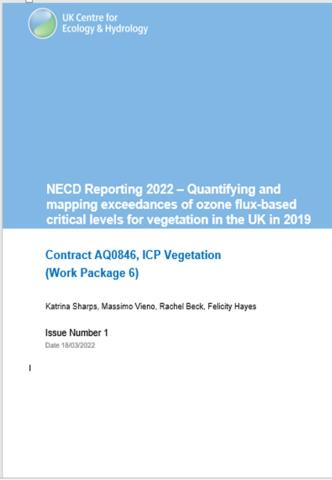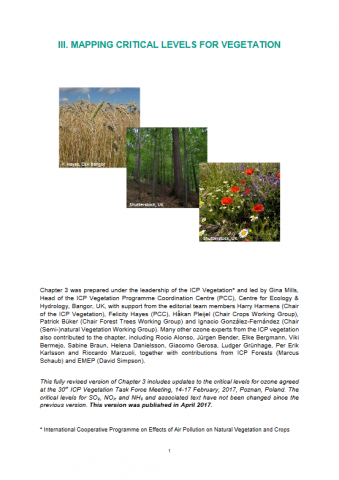Bibliography
.
2011. Nitrogen concentrations in mosses indicate the spatial distribution of atmospheric nitrogen deposition in Europe. Environmental Pollution. 159:2852-2860.
.
2016. Ozone impacts on vegetation in a nitrogen enriched and changing climate. Environmental Pollution. 208:898-908.
.
2018. Ozone pollution will compromise efforts to increase global wheat production.. Global Change Biology. 24:3560-3574.
.
2007. Ozone risk assessment for agricultural crops in Europe: Further development of stomatal flux and flux-response relationships for European wheat and potato. Atmospheric Environment. 41:3022-3040.
.
2014. Ozone - the persistent menace: interactions with the N cycle and climate change. Current Opinion in Environmental Sustainability. 9-10:9-19.
.
2007. Predicting community sensitivity to ozone, using Ellenberg Indicator values. Environmental Pollution. 146:744-753.
.
2014. Relationship between site-specific nitrogen concentrations in mosses and measured wet bulk atmospheric nitrogen deposition across Europe. Environmental Pollution. 194:50-59.
.
2007. A synthesis of AOT40-based response functions and critical levels of ozone for agricultural and horticultural crops. Atmospheric Environment. 41:2630-2643.
.
2013. Terrestrial mosses as biomonitors of atmospheric POPs pollution: A review. Environmental Pollution. 173:245-254.
.
2018. Tropospheric Ozone Assessment Report: Present-day tropospheric ozone distribution and trends relevant to vegetation.. Elementa: Science of the Anthropocene. 6(1):47.
.
2015. Twenty Eight Years of Icp Vegetation: An Overview of Its Activities. Annali Di Botanica. 5:31-43.
.
2012. Updated stomatal flux and flux-effect models for wheat for quantifying effects of ozone on grain yield, grain mass and protein yield. Environmental Pollution. 165:147-157.
.
2018. Wheat yield responses to stomatal uptake of ozone: Peak vs rising background ozone conditions.. Atmospheric Environment. 173:1-5.
 ]
] 
